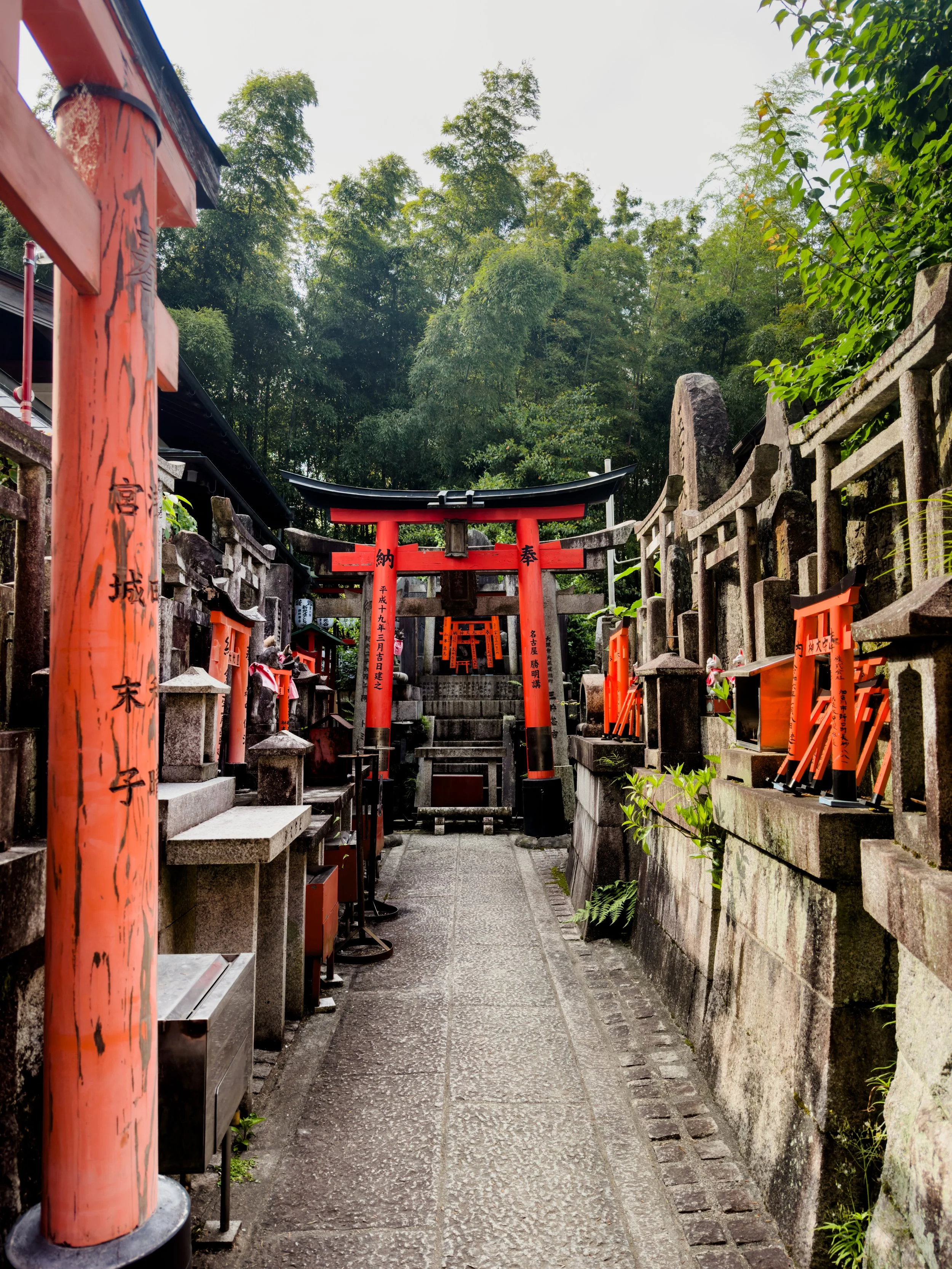FUSHIMI INARI TAISHI
After the crowds of Kiyomizu-Dera the previous afternoon, we committed to getting up very early and heading to Fushimi Inari Shrine, another iconic shrine of Kyoto. We were out of the accommodation by 6:30am, which saw us reach the shrine by 7:00am and this turned out to be the perfect time. Thankfully, our accommodation was fairly close to Demachiyanagi Station at the end of the Keihan line, Fushimi Inari train station is a few stops down on the same line so it a nice and easy to reach.
Fushimi Inari Taishi is a shinto shrine dedicated to the gods of rice and sake, which features many statues of foxes, who are considered to be the messengers of the god of cereal. The girls loved spotting all the stone foxes, I think any animal association, like GotoKuji Temple in Tokyo, makes visiting temples and shrines a little more interesting for kids.
The vermilion red torii gates are probably the most well known aspect of this shrine complex and it was a really amazing experience to walk through all the torii tunnels that line the path that winds up the mountain. for approximately 4km. However we made it about two third of the way up. It was a very enchanting shrine to experience, definitely one of our favourites.
There was still a number of other people but it didn’t feel too crowded or hot. As were leaving around 9:00am, we were gobsmacked by the shear amount of people getting ofF the trains that were arriving at Inari Station, and these trains were arriving every 10 or so minutes! So thankfull that we were able to experienced this shrine early in the morning.
NARA DEER PARK & TODAI-JI
As we still had the rest of the day ahead of us, we continued south on the train towards Nara. Nara is a solid day trip from Kyoto, but it’s well worth the visit. Like Kyoto, Nara was also once the ancient capital of Japan and is home to many fascinating shrine and temples. It’s also well known for the deer in the Nara Koen area.
The deer have lived in the Nara Koen area for a hundreds of years and are considered to be messengers of the gods, they are protected as National Treasures. Tourist can actually buy shika senbei, ‘deer crackers, to feed the deer which are made out of flour and rice bran. The deer were fairly friendly and the girls were quite keen to see them up close, but we soon realised that the deer love the crackers and can get a little pushy if you have crackers for them. If you don’t, well, the deers won’t give you much time. We even saw some deer pull at peoples shirts and chase people who had crackers. It was kind of amusing. We realised that if you hold up your hands and show the deer that you don’t have any crackers for them, they will leave you alone.
Nara Park has a number of temples and museums in it, but we wandered over to Todai-ji, Nara’s main attraction. Todai-ji is a sprawling Buddhist temple that contains Daibutsu-den (Hall of the Great Buddha), which is considered to be largest wooden structure in the world. It’s truly awe-inspiring! Inside is the daibutsu (Great Buddha) is one of the largest bronze figures in the world, again truly awe inspiring.
It was free to enter Nara Park and wander around Todai-ji, however it was 1200 yen per adult to enter the Daiutsu-den, so I went in alone. The deer and rest of the temple grounds was interesting enough for the rest of the family. I wasn’t too knowledgable about the significance of Todai-ji and the Great Buddha inside, but I’m grateful to have had the chance to visit it. It’s a UNESCO World Heritage site and such a magnificent site to behold.












